Roofing must never be taken for granted, especially for log homes in extremes of weather. Before you build a log home or replace roofing, consider the best type for your climate and budget and roofing that complements your home’s architecture.
What To Keep In Mind About Roofing
Roofing contractors know what goes into installing a great roof for your climate. Here are some things to know before you build a new log home or replace the roofing on an existing one:
- Access – Create one or more places to easily access the roof
- Color – Carefully select the roofing color to coordinate with the wall and window colors
- Contractor – Hire a licensed, insured, and reputable roofing company
- Ventilation – Install effective ventilation to allow for adequate airflow to extend its life
- Inspections – Inspect your roof twice each year to check for any problems
- Maintenance – Keep roofing clean, free of debris and leaves, and repair when needed
- Material – The type of material can affect its appearance, cost, durability, and longevity
- Moss – Moss on a roof may mean it is absorbing water that will cause damage
- Weather – Climate extremes from very cold and humid to very hot and dry have their own roofing requirements
Pros Of Metal Log Home Roofing
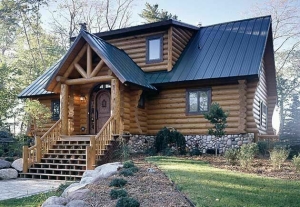 The popularity of metal roofing has grown substantially during the last two decades. Metal roofing whether aluminum, steel, tin, or zinc has some pros that outweigh its cons, including:
The popularity of metal roofing has grown substantially during the last two decades. Metal roofing whether aluminum, steel, tin, or zinc has some pros that outweigh its cons, including:
- Aesthetics – There are a variety of styles, shapes, and colors to add curb appeal
- Durability – This material can withstand extreme weather and winds
- Energy Efficiency – Insulation is installed under metal and it also reflects heat
- Lifespan – Metal roofing can last 40 -70 years depending on its quality
- Safety – Most metal roofs have a Class A fire rating and resist surface flame spread
- Sustainability – Metal is eco-friendly and typically made of 35%-95% recycled items
“Before you build a log home or replace roofing, consider the best type for your climate and budget and roofing that complements your home’s architecture.”
Cons Of Metal Roofing
Although metal roofing is becoming more popular, it has a few disadvantages you should be aware of. The major con is that it costs more than asphalt shingle roofing. Others include:
- Dents – Metal roofs can experience damage in spite of their sturdiness. Steel is not dented as much as aluminum and copper from hail and falling tree branches. Dents can also cause paint to chip or fade.
- Lack – Fewer contractors know how to install metal roofing correctly than asphalt shingle roofing. Make sure the installer has the right experience, proper insurance, and licensing for the job.
- Noise – Storms make noises and you will probably hear them through metal roofing. If you are bothered by this type of noise, install more insulation under it to dampen noises.
- Rust – Although it happens infrequently, rust can appear on metal roofing in humid coastal climates. The best solution to prevent rust is to use Galvalume steel.
Pros Of Asphalt Shingle Log Home Roofing
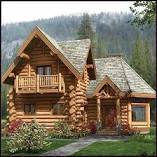 Asphalt shingles have been one of the most popular styles of roofing for decades. They provide some benefits over metal roofing you can consider before installing a roof.
Asphalt shingles have been one of the most popular styles of roofing for decades. They provide some benefits over metal roofing you can consider before installing a roof.
- Cost – Asphalt shingles are one of the most affordable options for roofing. It is a great choice for any homeowner on a tight budget.
- Installation – Asphalt shingles are easy to install because they are light and easy to cut to size. No special tools are required compared to metal roofing.
- Replacement – Shingles are fast and easy to replace whether one or a dozen are damaged and need replacement.
- Style – These shingles are visually flexible because they are available in many styles to complement virtually any home.
Cons Of Asphalt Shingles
Although asphalt shingles are less expensive than metal roofing, they do come with some cons you should know about. The most common disadvantages are:
- Appearance – Plain-looking asphalt shingles are not as attractive or unique as metal, wood shingles, or wood shakes.
- Cracking – This material can crack under extreme temperature fluctuations because they are thin and light. They can also crack due to expansion and contraction.
- Lifespan – Their lifespan is typically limited to 15 – 20 years as opposed to metal roofing’s span of 40-70 years.
- Temperature – Asphalt shingles need to be installed in warmer temperatures to ensure they adhere correctly. Installing them when it’s below freezing can cause problems.
- Wind – Cheaper shingles are more vulnerable to strong winds that can pull them loose and cause water leaks.
We hope these ideas help with your decision to roof your log home. Consider each material’s pros and cons and talk to a contractor to make the best choice. For more ideas about building a log home, click here.

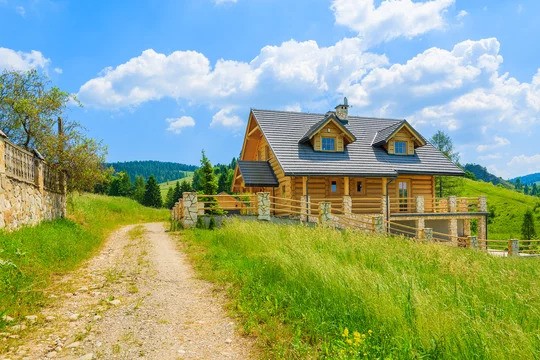

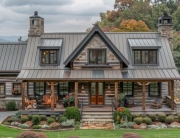
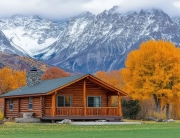
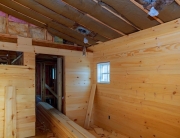
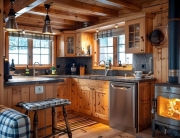
Recent Comments